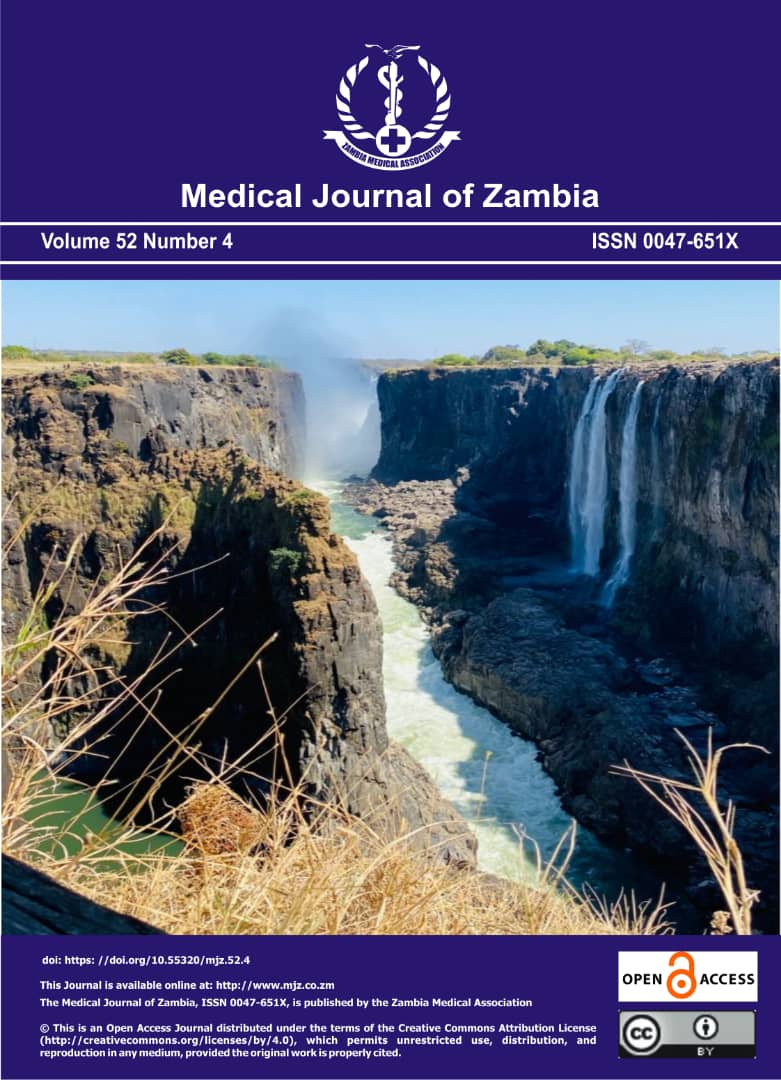Association between Caspase-3 and miR-155-5p expression in Kaposi's Sarcoma in Zambia
DOI:
https://doi.org/10.55320/mjz.52.4.737Keywords:
Kaposi’s sarcoma, Human Immunodeficiency Virus (HIV), tumorigenesis, apoptosis, miR-155-5p, Caspase 3Abstract
Background: Kaposi’s sarcoma (KS) is a vascular tumor driven by the human herpesvirus 8 (HHV8). KS is the most prevalent HIV/AIDS associated cancer in the world and second most prevalent cancer in Zambia with 16% incidence and 15% mortality. While little is known about the molecular mechanisms that drive this disease, data suggests that HHV8 promotes KS tumorigenesis through inhibition of apoptosis by HHV8-encoded micro RNAs. One example is miR-155-5p which has been shown to promote tumor progression and inhibit expression of pro-apoptotic caspase 3. This study therefore aims to investigate the correlation between miR-155-5p and caspase 3 in KS.
Method: An analytical cross-sectional approach compared miR-155-5p and caspase-3 mRNA and protein expression in KS tissues versus adjacent controls using RT-PCR and immunohistochemistry respectively. Comparison of miR-155-5p and caspase-3 expression levels in KS and normal controls was done using the Wilcoxon rank-sum test while Spearman’s rank was used to test for any correlation.
Results: No significant difference was observed between miR-155-5p and Caspase-3 mRNA expression in KS vs normal controls, however, there was a significant negative correlation between miR-155-5p and Caspase-3 mRNA in KS tissues. Furthermore, there was no significant difference in caspase 3 protein in KS vs normal controls. Importantly, a positive correlation between miR-155-5p and viral load in KS tissues was observed.
Conclusion: This suggests a potential inverse relationship between miR-155-5p and caspase 3 mRNA in KS. Additionally, miR-155-5p expression may be regulated by HIV viral load however the nature of this regulation remains to be investigated.
Downloads
Downloads
Published
Issue
Section
License
Copyright (c) 2025 Medical Journal of Zambia

This work is licensed under a Creative Commons Attribution-NonCommercial 4.0 International License.









